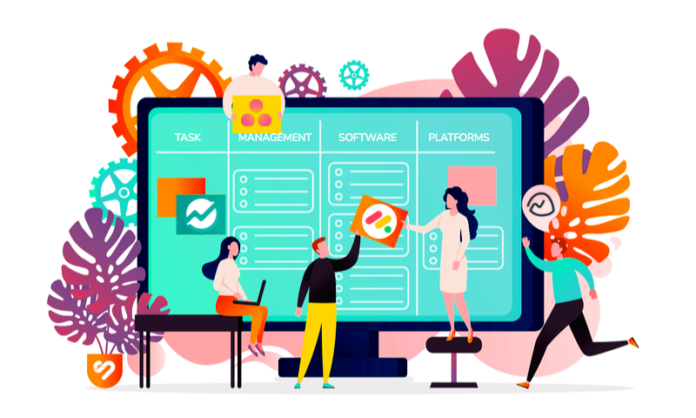In the realm of modern technology, where information overload is a daily reality, managing tasks efficiently is paramount. Enter prompt engineering, an often-underestimated technique that serves as a cornerstone for achieving scalability and effective task management. From aiding language models in understanding user instructions to enhancing cognitive load management, prompt engineering is a dynamic tool that holds the potential to transform the way we interact with technology.
Definition: What is Prompt Engineering and its Core Concept

Prompt engineering is the art of crafting precise and context-rich instructions or prompts that guide language models or AI systems toward desired outcomes. It’s akin to communicating with a virtual assistant, where the phrasing of your request significantly influences the response you receive. The core concept revolves around constructing ones that provide sufficient context, relevant keywords, and clear objectives, enabling AI systems to comprehend and generate accurate responses.
Scalability: Role of Prompt Engineering in Achieving Scalable Solutions
In the ever-expanding digital landscape, scalability is the linchpin of success. Prompt engineering emerges as a pivotal player in achieving scalable solutions. By meticulously constructing them that encapsulate a wide array of user intentions, developers equip AI systems to handle increased workloads seamlessly. These well-crafted prompts empower technology to comprehend diverse inputs, catering to a growing user base without sacrificing accuracy or efficiency.
As industries grapple with surges in demand, it stands as a strategic cornerstone, enabling businesses to effortlessly adapt and expand while maintaining the quality of interactions. It’s through this practice that technology scales its capabilities to match the evolving needs of a dynamic digital world.
Task Management: Enhancing Task Organization through Prompt Engineering

Task management is the backbone of productivity, both in personal and professional spheres. With prompt engineering, task organization is promptly generated to reach new heights of efficiency. By formulating them that specify tasks clearly and concisely, individuals and teams can streamline their workflows, allocate resources effectively, and prioritize tasks based on their importance. This approach empowers users to manage their responsibilities with clarity, resulting in better time management and increased productivity.
Cognitive Load: Reducing Complexity
In a world saturated with information, reducing cognitive load—the mental effort required to process information—is a crucial goal. Well-crafted prompts lighten this load by providing AI systems with the necessary context, minimizing guesswork, and enhancing comprehension. Users benefit from clearer responses, while developers can create user-friendly interfaces that feel intuitive. This, in turn, makes interactions with technology smoother, allowing users to focus on the task at hand rather than deciphering complex instructions.
Personalization: Adapting Prompts for Diverse User and Task Needs

In a world where individuality reigns, personalization is the key to exceptional user experiences. The art facilitates this by adapting them to diverse user and task needs. By tailoring them to accommodate unique preferences, language nuances, and specific requirements, AI systems can provide responses that resonate on a personal level.
Whether it’s the tone of communication, specialized terminologies, or cultural context, personalized ones enhance engagement and relevance. This dynamic approach bridges the gap between technology and human interaction, making users feel understood and catered to. Through adept prompt engineering, technology transforms into a customizable tool that seamlessly aligns with the intricate tapestry of individual preferences and tasks.
Automation: Streamlining Processes Using Engineered Prompts
Automation is the heartbeat of modern efficiency. Engineered prompts facilitate automation by serving as clear directives for AI systems to execute tasks. From chatbots handling customer queries to data analysis tools crunching numbers, well-designed ones provide the necessary input to trigger automated processes. This not only saves time and resources but also reduces human error, ensuring consistent and reliable outcomes.
Language Models: How Prompt Engineering Applies to AI-Language Models

Language models, such as AI’s remarkable GPT-3, have revolutionized how we communicate with technology. This is the catalyst behind their prowess. By crafting precise and context-rich prompts, users guide these models to generate human-like text, code, and more. Clever design empowers individuals to effortlessly draft emails, create code snippets, and compose articles. Whether you’re seeking translation aid or creative inspiration, the art empowers you to tap into the vast capabilities of AI language models, turning them into indispensable tools that cater to your unique needs and preferences.
Challenges: Addressing Issues and Limitations
Prompt engineering isn’t without its challenges. Crafting them that cover a wide array of potential inputs while maintaining clarity is an intricate process. Ambiguous ones can lead to inaccurate results, and biased language can perpetuate inequalities. Striking a balance between specificity and flexibility requires careful thought. Developers must also consider ethical concerns and user privacy, ensuring that the technology benefits society at large.
Best Practices: Tips for Effective Prompt Engineering and Optimization
Mastering demands a keen understanding of user intent and AI capabilities. Start with a clear objective and context in mind. Use concise language and relevant keywords, avoiding ambiguity. Experiment with different ones to find the most effective formulation. Regularly assess and refine them based on user feedback and performance metrics. Collaborate with diverse teams to uncover potential biases and blind spots.
Future Trends: Anticipating the Evolving Landscape

As technology advances, it will continue to evolve. More sophisticated AI systems will demand even more refined prompts. Multimodal interactions, combining text and images, will become prevalent, requiring ones that cater to multiple data types. Ethical prompt engineering will gain importance, ensuring fairness, inclusivity, and privacy. With AI’s growing role in our lives, it will remain an integral discipline, shaping the way we interact with technology and unlocking new frontiers of possibility.
Conclusion
In conclusion, prompt engineering is a dynamic and transformative technique that unlocks the doors to scalability, efficient task management, and enhanced user experiences. From reducing the cognitive load to enabling automation and personalization, its impact spans various domains.
As technology propels forward, mastering this will be pivotal in harnessing the power of AI, making interactions with machines more intuitive, productive, and human-centric. So, whether you’re a developer, a business professional, or simply an enthusiastic user of technology, understanding and embracing prompt engineering can truly be the key to unlocking the future.







